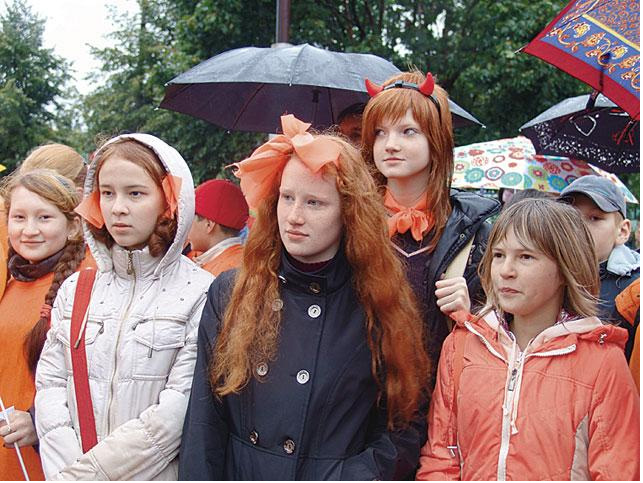It looks like you're using an Ad Blocker.
Please white-list or disable AboveTopSecret.com in your ad-blocking tool.
Thank you.
Some features of ATS will be disabled while you continue to use an ad-blocker.
share:
beansidhe
reply to post by Logarock
You know that the two main rivers in Aberdeen are the Don and the Dee? The Don runs from the Grampians out to sea.
River Don
The tribe of Dan? As in Tuatha de Danaan?
Yea. There is some idea about this having something to do with "Dianna" but its the tribe of Dan. Their original homeland was on the cost of there near Tyre and Sidon. Great pals of the Phoenicians.
beansidhe
reply to post by Logarock
You know that the two main rivers in Aberdeen are the Don and the Dee? The Don runs from the Grampians out to sea.
River Don
The tribe of Dan? As in Tuatha de Danaan?
Take a map of Ireland and Britain and just look at all the towns most small that start with Dan, Don, Dun ect. Its amazing and their influence must have been all powerfully at some point. Heck even Den-mark.....or Dans Mark. Wide ranging and all influencing sea people at one point going way back. At one point from Donegal Ireland all of Britain and much of Scandinavia was ruled by this powerful maritime force.
hey i didn't write the tablet or draw the conclusion about noah, that was the experts opinion.
triblive.com...
and for Beansidhe
www.bibliotecapleyades.net...
It turned out, Finkel said, to be “one of the most important human documents ever discovered.”
Finkel is aware his discovery may cause consternation among believers in the biblical story. When 19th-century British Museum scholars first learned from cuneiform tablets that the Babylonians had a flood myth, they were disturbed by its striking similarities to the story of Noah.
“Already in 1872 people were writing about it in a worried way — what does it mean that holy writ appears on this piece of Weetabix?” he joked, referring to a cereal similar in shape to the tablet.
Finkel has no doubts.
“I'm sure the story of the flood and a boat to rescue life is a Babylonian invention,” he said.
He believes the tale was likely passed on to the Jews during their exile in Babylon in the 6th century B.C.
triblive.com...
and for Beansidhe
The Irish worshipped the Sidhe, and the bards identify the Sidhe with the Tuath de Danaan.--The identity of the Tuath de Danaan with the degenerate fairy of Christian times appears plainly in the fact, that while Sidhes are the halls of Tuatha, the fairies are the people of the Sidhe, and sometimes called the Sidhe simply."
www.bibliotecapleyades.net...
edit on 3-3-2014 by Danbones because: (no reason given)
edit on 3-3-2014 by Danbones because: (no reason given)
reply to post by Danbones
Who are you calling degenerate?!
Bean sidhe (or Banshee) is literally 'woman fairy' - the washer at the river, who warns of approaching death. I've got four little kids, so I'm always washing. She seemed appropriate!
And can you explain your Dan connection...? Just joking, it makes me laugh that a ram, a rock, a sidhe and a Dan are deciphering
these stones!
Who are you calling degenerate?!
Bean sidhe (or Banshee) is literally 'woman fairy' - the washer at the river, who warns of approaching death. I've got four little kids, so I'm always washing. She seemed appropriate!
And can you explain your Dan connection...? Just joking, it makes me laugh that a ram, a rock, a sidhe and a Dan are deciphering
these stones!
edit on 4-3-2014 by beansidhe because: eta
edit on 4-3-2014 by beansidhe because: (no reason given)
reply to post by Logarock
Off the top of my head, Dunblane, Dunfermline, Dunkeldy, all near Perth and the Tay.
For the first time in a long time, this is starting to make sense.
I'm going to state the obvious, but these (especially the later) stones would have to be commissioned. The very early ones, probably less so. Although, if they are much, much older than we thought, perhaps they were originally crisp and clean edged and it's the effects of time that has ravaged them, rather than the artist being less skilled? Just a thought.
Anyway, if you are going to commission a stone, you have to approach a 'guild' of carvers - there has to be a recognised group who will carry out this work. You can't just take a notion for a carving and happen across someone who's quite good at it.
Someone, over time, has been teaching the skills required, and this group have retained the iconography.
Ramcheck gave a good example of the horseshoe/Mithraic arch - all carved similarly, and miles and miles apart. So there surely was a group dedicated to this art. It reminds me of historian Karen Ralls-MacLeod, when she said earlier about the beginnings of the Free Masons in Scotland in 1500 and something - it was known by the leaders of this movement that the craft was already ancient.
It makes sense of the conflicting view that the same people were carving these stones, regardless of the foreign influences controlling the area at the time.
Off the top of my head, Dunblane, Dunfermline, Dunkeldy, all near Perth and the Tay.
For the first time in a long time, this is starting to make sense.
I'm going to state the obvious, but these (especially the later) stones would have to be commissioned. The very early ones, probably less so. Although, if they are much, much older than we thought, perhaps they were originally crisp and clean edged and it's the effects of time that has ravaged them, rather than the artist being less skilled? Just a thought.
Anyway, if you are going to commission a stone, you have to approach a 'guild' of carvers - there has to be a recognised group who will carry out this work. You can't just take a notion for a carving and happen across someone who's quite good at it.
Someone, over time, has been teaching the skills required, and this group have retained the iconography.
Ramcheck gave a good example of the horseshoe/Mithraic arch - all carved similarly, and miles and miles apart. So there surely was a group dedicated to this art. It reminds me of historian Karen Ralls-MacLeod, when she said earlier about the beginnings of the Free Masons in Scotland in 1500 and something - it was known by the leaders of this movement that the craft was already ancient.
It makes sense of the conflicting view that the same people were carving these stones, regardless of the foreign influences controlling the area at the time.
edit on 4-3-2014 by beansidhe because: eta
reply to post by Danbones
Experts really? Had they been experts they would have said Duh. The idea that they Jews picked this story up while captives in Babylon is so amateurish as to be dizzyingly stupid.
Again, the Hebrews, their ancestral roots, were in Ur. In short Abraham was from the area, grew up there, went to high school and probably played on the high school football team. Hebrew history has his dad as visor, secretary, to none other than Nimrod himself. When Abraham had moved down south and his son needed a bride, he sent back to the homeland, his relatives there and go his son a wife from his own people.
This is just a dead end horse beat to death by the historically dissident.
And were did the south Pacific Islanders get their ancient flood stories? Those are the real questions. Not some guy that grew up in Ur and passed the story down only to have THAT story confirmed in general by uncovering....DUH....the public "Euphrates Valley" library many years later. I ask you in all honesty, anyone, where is the story there? Where is the great conspiracy?
Top Story...."Descendent of Ur family have amazing similar flood story to that uncovered at the old UR library". Scholars were SHOCKED today at these revelations.
Experts really? Had they been experts they would have said Duh. The idea that they Jews picked this story up while captives in Babylon is so amateurish as to be dizzyingly stupid.
Again, the Hebrews, their ancestral roots, were in Ur. In short Abraham was from the area, grew up there, went to high school and probably played on the high school football team. Hebrew history has his dad as visor, secretary, to none other than Nimrod himself. When Abraham had moved down south and his son needed a bride, he sent back to the homeland, his relatives there and go his son a wife from his own people.
This is just a dead end horse beat to death by the historically dissident.
And were did the south Pacific Islanders get their ancient flood stories? Those are the real questions. Not some guy that grew up in Ur and passed the story down only to have THAT story confirmed in general by uncovering....DUH....the public "Euphrates Valley" library many years later. I ask you in all honesty, anyone, where is the story there? Where is the great conspiracy?
Top Story...."Descendent of Ur family have amazing similar flood story to that uncovered at the old UR library". Scholars were SHOCKED today at these revelations.
beansidhe
reply to post by Danbones
Who are you calling degenerate?!
Bean sidhe (or Banshee) is literally 'woman fairy' - the washer at the river, who warns of approaching death. I've got four little kids, so I'm always washing. She seemed appropriate!
And can you explain your Dan connection...? Just joking, it makes me laugh that a ram, a rock, a sidhe and a Dan are deciphering
these stones!edit on 4-3-2014 by beansidhe because: etaedit on 4-3-2014 by beansidhe because: (no reason given)
lol
i think the original faries are faroes ( as in faroe islands? )...originally they were running things as opposed to
that degenerate....tinkerbell
re our AVs
mine has the cross and stars and pyramid, which i had no idea of the meaning of when i chose it...
being the celtic cross is the most important thing i have learned on the internet
and the main syllable in my sir name is CAM as in river or further back the Latin word for forge...
as for dAN, i think the key part is the root AN..mAN. ANgel, ANgle, stANd, hANd humAN plANet...atlANtis...sEA brEAth bEAn EArth
edit on
4-3-2014 by Danbones because: (no reason given)
reply to post by Logarock
they stole the story
guess they didn't have one of their own
or you might have posted something other then just the word "STUPID" in reponse to the fact of that tablet
every one knows posting the word "stupid" - thats a tactic reserved for zero proof
ohhh right...i get it
it also means somebodies boundry stones might be ..somewhat less then a decree by god....
phhhhffft
i guess it does
they stole the story
guess they didn't have one of their own
or you might have posted something other then just the word "STUPID" in reponse to the fact of that tablet
every one knows posting the word "stupid" - thats a tactic reserved for zero proof
ohhh right...i get it
it also means somebodies boundry stones might be ..somewhat less then a decree by god....
phhhhffft
i guess it does
edit on 4-3-2014 by Danbones because: (no reason given)
reply to post by Danbones
Wow Bones I really expected something of a better retort than this 2,4,6 standard wwaaa from you. I thought you were somewhat of an investigator and scholar.
By the way I said "dizzyingly stupid" not just stupid.
Wow Bones I really expected something of a better retort than this 2,4,6 standard wwaaa from you. I thought you were somewhat of an investigator and scholar.
By the way I said "dizzyingly stupid" not just stupid.
edit on 4-3-2014 by Logarock because: n
reply to post by beansidhe
Hi Beansidhe,
You might find this interesting.
frontiers-of-anthropology.blogspot.com...
Hi Beansidhe,
You might find this interesting.
The Duhare cheese-makers
While Gordillo and Quejo treated the Chicora Indians with treachery, their relations with the other province along that section of the Atlantic Coast were peaceful. Peter Martyr recorded its name as Duhare. It was one of the more powerful provinces in the region.
The inhabitants of Duhare were described as being Europeans, who seemed to possess few metal tools. They had red to brown hair, tan skin and gray eyes. The men wore full beards and were much taller than the Spanish. The ancestors of the Creek Indians were at least a foot taller than the Spanish. The ancestral Creek men wore mustaches and high leaders wore beards, but the beards were thin like those of the Chinese and Koreans. Nevertheless, Spanish accounts clearly labeled the Duhare, Caucasians, even though their houses and pottery were apparently similar to those of American Indians.
In many respects, the Duhare had similar lifestyles to neighboring American Indian provinces, for one exception . . . they raised many types of livestock including chickens, ducks, turkeys, geese and deer. According to all Spanish sources, the Duhare maintained large herds of domesticated deer and made cheese from deer milk! The excess male deer population was fattened with corn for butchering. The deer stayed in corrals within the villages at night, but grazed in herds in the day time, accompanied by “deer-herders” and herd dogs. Neighboring peoples knew not to hunt them. Several Spanish sources, including de Ayllón, stated that the Duhare owned some horses. However, when interviewed by Martyr, Francisco de Chicora could not confirm or deny the presence of horses.
The Spanish soldiers may have observed Chamoisee dairy goats being herded and milked. The goats of Spain are descended from a short wild goat with curly hair called a capra prisca. The wild Chamois goat of northern Europe is similar and appearance and size to a North American white tail deer.
The people of Duhare were also skilled farmers. They grew large quantities of Indian corn, plus another grain, which the Spanish did not recognize. They also grew several varieties of potatoes and all the other vegetables that had been developed in the New World.
The king of Duhare was named Datha. He was described by the Spanish as being a giant, even when compared to his peers. He had five children and a wife as tall as him. Datha had brightly colored paint or tattoos on his skin that seemed to distinguish him from the commoners.[Emphasis Added by DD]
frontiers-of-anthropology.blogspot.com...
edit on 4-3-2014 by punkinworks10 because: (no reason given)
reply to post by punkinworks10
I find it incredibly interesting, thank you punkinworks!
Not least because it might help to solve the mystery of the corn carvings in Rosslyn Chapel, built over an old Pictish site in 1446.

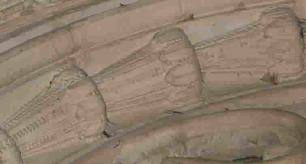
And deer? We know deer are very special to the Picts:
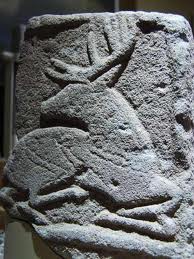
My money would be on it being deer, before special goats!
I find it incredibly interesting, thank you punkinworks!
Not least because it might help to solve the mystery of the corn carvings in Rosslyn Chapel, built over an old Pictish site in 1446.


And deer? We know deer are very special to the Picts:

My money would be on it being deer, before special goats!
Just before I forget this. The name Lebanon (an area uses by Phoenician traders on the Med) is an Ancient Semitic term meaning 'White', as is 'Alba',
or 'Albyn'.
The Semites who lived in the eastern portion of the Fertile Crescent were Sumerians, Assyrians, and Babylonians.
Carry on
The Semites who lived in the eastern portion of the Fertile Crescent were Sumerians, Assyrians, and Babylonians.
Carry on
edit on 4/3/14 by Ramcheck because: typo
reply to post by Logarock
Another one for your list. The Isle of Danna, Inner Hebrides. Which is connected to the mainland via a causeway.
en.wikipedia.org...
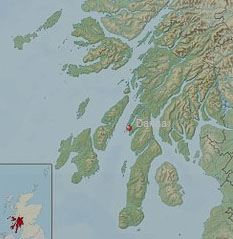
Not far from the neighbouring Isle of Colonsay, just for point of reference.
en.wikipedia.org...
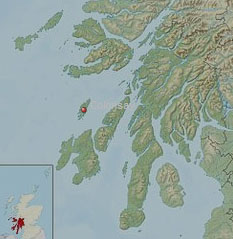
Riasg Buidhe Cross on Colonsay
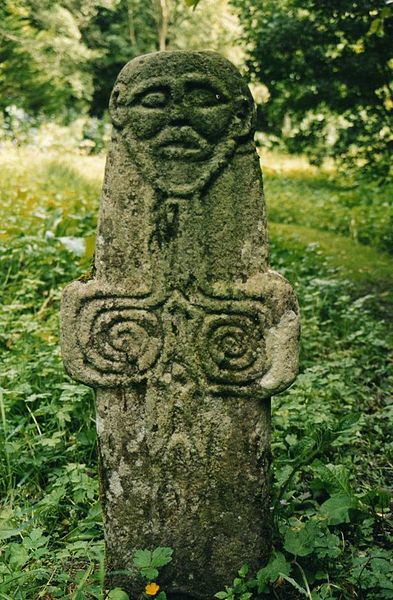
One side of the cross shows a solemn face with distinctive eyebrows and ears. The depicted face rests its chin on top of a cross with Celtic decor. It has two opposite spirals on the cross legs and lower ends in a fishtail.
The other side of the cross shows priapic form (which I take to mean it is representative of a Phallic form)
Another one for your list. The Isle of Danna, Inner Hebrides. Which is connected to the mainland via a causeway.
en.wikipedia.org...

Not far from the neighbouring Isle of Colonsay, just for point of reference.
en.wikipedia.org...

Riasg Buidhe Cross on Colonsay

One side of the cross shows a solemn face with distinctive eyebrows and ears. The depicted face rests its chin on top of a cross with Celtic decor. It has two opposite spirals on the cross legs and lower ends in a fishtail.
The other side of the cross shows priapic form (which I take to mean it is representative of a Phallic form)
reply to post by Ramcheck
You do love that Scythian theory, don't you? And at last we can see them in Scotland!
Here's some Scythian work - notice the eyebrows:
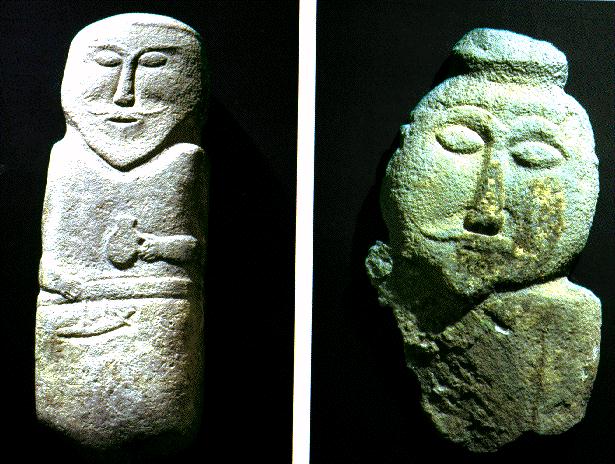
You do love that Scythian theory, don't you? And at last we can see them in Scotland!
Here's some Scythian work - notice the eyebrows:

edit on 4-3-2014 by beansidhe because: Eyebrows for proof!
reply to post by beansidhe
I'm certainly intrigued by it yeah, my Scythian theory ties in with many features of modern day Scotland and Ireland, that we can see now in 2014 on a daily basis, I mean I personally I know about 20 red headed people, and obviously we know that 40% of modern day Scots carry the red head genome, as do the Udmurts (who to be quite honest, could easily be mistaken for Scots just looking at them.) I am of the opinion the Scythians and Phoenicians met and crossed paths in Northern Scotland or Western Isles, most probably around 1000BC, towards the end of the Phoenecian travels. Where are those stones situated, do you know?
I'm certainly intrigued by it yeah, my Scythian theory ties in with many features of modern day Scotland and Ireland, that we can see now in 2014 on a daily basis, I mean I personally I know about 20 red headed people, and obviously we know that 40% of modern day Scots carry the red head genome, as do the Udmurts (who to be quite honest, could easily be mistaken for Scots just looking at them.) I am of the opinion the Scythians and Phoenicians met and crossed paths in Northern Scotland or Western Isles, most probably around 1000BC, towards the end of the Phoenecian travels. Where are those stones situated, do you know?
edit on 4/3/14 by Ramcheck because: typo
reply to post by Ramcheck
Your ones are on Colonsay, which is perfect - the Scythians on the West, half the Med on the East!
Mine are from the Altai region in southern Russia.
The Gallery of Archaeological Collections
Your ones are on Colonsay, which is perfect - the Scythians on the West, half the Med on the East!
Mine are from the Altai region in southern Russia.
The Gallery of Archaeological Collections
reply to post by Ramcheck
Oh my goodness.That woman on the right works in our co-op! They do look Scottish - or do we look Udmurtish?
Oh my goodness.That woman on the right works in our co-op! They do look Scottish - or do we look Udmurtish?
beansidhe
reply to post by Ramcheck
Your ones are on Colonsay, which is perfect - the Scythians on the West, half the Med on the East!
Mine are from the Altai region in southern Russia.
The Gallery of Archaeological Collections
Nice one thank you. By the way that's only 1,234 miles from Udmurtia.

They both fall under the Kransogorsky District
new topics
-
Are you ready for the return of Jesus Christ? Have you been cleansed by His blood?
Religion, Faith, And Theology: 4 minutes ago -
Chronological time line of open source information
History: 1 hours ago -
A man of the people
Diseases and Pandemics: 2 hours ago -
Ramblings on DNA, blood, and Spirit.
Philosophy and Metaphysics: 3 hours ago -
4 plans of US elites to defeat Russia
New World Order: 4 hours ago -
Thousands Of Young Ukrainian Men Trying To Flee The Country To Avoid Conscription And The War
Other Current Events: 7 hours ago -
12 jurors selected in Trump criminal trial
US Political Madness: 10 hours ago -
Iran launches Retalliation Strike 4.18.24
World War Three: 10 hours ago -
Israeli Missile Strikes in Iran, Explosions in Syria + Iraq
World War Three: 11 hours ago
top topics
-
George Knapp AMA on DI
Area 51 and other Facilities: 16 hours ago, 26 flags -
Israeli Missile Strikes in Iran, Explosions in Syria + Iraq
World War Three: 11 hours ago, 17 flags -
Thousands Of Young Ukrainian Men Trying To Flee The Country To Avoid Conscription And The War
Other Current Events: 7 hours ago, 6 flags -
Iran launches Retalliation Strike 4.18.24
World War Three: 10 hours ago, 6 flags -
Not Aliens but a Nazi Occult Inspired and then Science Rendered Design.
Aliens and UFOs: 17 hours ago, 5 flags -
12 jurors selected in Trump criminal trial
US Political Madness: 10 hours ago, 4 flags -
4 plans of US elites to defeat Russia
New World Order: 4 hours ago, 2 flags -
Chronological time line of open source information
History: 1 hours ago, 2 flags -
Ramblings on DNA, blood, and Spirit.
Philosophy and Metaphysics: 3 hours ago, 1 flags -
A man of the people
Diseases and Pandemics: 2 hours ago, 1 flags
active topics
-
Israeli Missile Strikes in Iran, Explosions in Syria + Iraq
World War Three • 54 • : CarlLaFong -
Are you ready for the return of Jesus Christ? Have you been cleansed by His blood?
Religion, Faith, And Theology • 0 • : TheGoodNews -
12 jurors selected in Trump criminal trial
US Political Madness • 30 • : RazorV66 -
Thousands Of Young Ukrainian Men Trying To Flee The Country To Avoid Conscription And The War
Other Current Events • 5 • : JAY1980 -
Meet Catturd who has been swatted 3 times
General Conspiracies • 22 • : 7dayhome -
A man of the people
Diseases and Pandemics • 6 • : PrivateAngel -
In the Beginning was the Word, and the Word was with God, and the Word was God
Religion, Faith, And Theology • 28 • : TheGoodNews -
Biden--My Uncle Was Eaten By Cannibals
US Political Madness • 48 • : CarlLaFong -
The Truth About Jesus
Conspiracies in Religions • 270 • : TheGoodNews -
Russia Flooding
Fragile Earth • 18 • : Hakaiju

